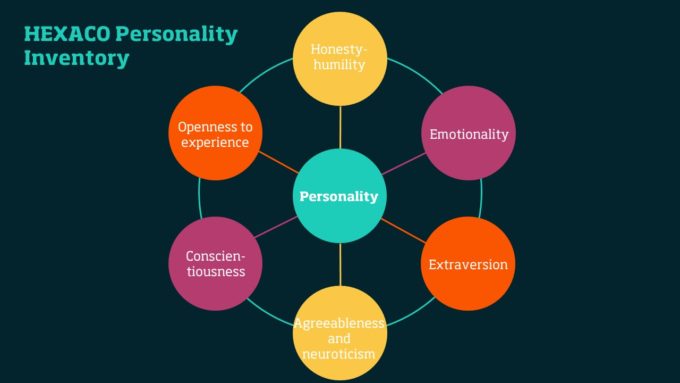
Why leaders should learn to value the boundary spanners
Entrepreneurial talent who work with other teams often run into trouble with their managers. Here are ways to get the most out of your ‘boundary spanners’...
Audio available

by Liz Ritterbush Published March 16, 2022 in Human Resources • 19 min read •

Every day when we turn on the news, there seems to be another corporate scandal. Someone, somewhere stole from someone else, hid their money overseas, mistreated their employees, or neglected to look out for society. And such failures don’t affect only the obvious victims – the legal and financial consequences, and the reputational damage, rebound on the companies themselves, destroying organizations and ruining careers.
Demand is growing for greater corporate accountability, but it is coming from people rather than governments. Shareholders, customers, and citizens are demanding that organizations add values and ethics to the triple bottom line, and governments are under pressure to listen to this societal push and impose sanctions that act as a real brake on unethical behaviour.
Corrupt practices seem to be far more than a question of “bad apples”. They seem to permeate the world we live in, but why? Some would argue it’s all a matter of context: good people just act “bad” because of opportunity, pressures, or a combination of the two. Yet we all know that some people are inherently more “good” than others. We all know that person who’s willing to lend a helping hand to a stranger in need, just as we know those people that don’t bat an eye when someone else is in pain.
If you are responsible for bringing new people into the company, how do you tell who is “good” and who is “bad”? Who should you hire and trust to make the big decisions? And, once you hire them, how do you get them to stay and sustain good behavior?
Akron General Health System in Ohio agreed in mid-2021 to pay the US Department of Justice $21.25 million after admitting it overpaid physicians for referrals, then submitted claims for these illegally referred patients. In 2015, the hospital’s former Director of Internal Audit had sued AGHS, alleging she had been fired after she took her concerns to the board. Around the same time, Cleveland Clinic Foundation acquired AGHS and voluntarily disclosed the fraud to the DOJ, which accepted that the arrangements were put in place by the previous owners and gave Cleveland credit for its cooperation. The whistleblower received part of the settlement under the provisions of the False Claims Act.
Illycaffe has a reputation of doing business sustainably, but chief executive Andrea Lilly has no interest in ethical certification schemes such as Fairtrade, which guarantees a minimum price to coffee growers in cooperatives that pay fees for inspection and certification. Instead, Illy’s Universita del Caffe offers free training to growers, so that Illy can buy direct and pay a premium for the right beans. Illy says it is fairer for the buyer to bear the burden of guaranteeing quality, and its commitment to environmental sustainability is built on its value of respect.
Charlotte Instone was studying at the London School of Fashion in 2013 when the collapse of the Rana Plaza factory in Dhaka, Bangladesh, killed at least 1,130 people. She was horrified at the deaths of the workers, many of whom were sewing for high street brands that had no idea where their products were coming from. In response, Instone launched Know The Origin, which sells fair trade, organic clothes that can be traced all the way back to India to the ginners, spinners, zero-waste dyers and women’s cooperatives who make them.
US investment bank Goldman Sachs admitted paying $1 billion in bribes to win work raising $6.5bn for Malaysia’s sovereign wealth fund, 1MDB, then agreed in 2020 to return $600m in fees and to pay $2.3bn to regulators in the US, UK, Hong Kong and Singapore. After at first blaming rogue employees, the bank finally conceded there had been “institutional failure” and said it had ignored red flags that should have alerted higher-ups to what was going on.
In Australia, the CEO of international mining giant Rio Tinto, Jean-Sebastien Jacques, and two senior executives were forced to quit in 2020 after the company blew up 46,000-year-old rock shelters to get at higher volumes of high-grade iron ore. The resignations came after intense pressure from shareholders outraged by the destruction of the sites, which the company later admitted were of “exceptional archaeological and cultural significance”.
Volkswagen’s group CEO Martin Winterkorn resigned in 2015 amid a scandal over VW’s use of software to cheat on emissions tests. The deceit appears to have originated with engineers in California, but executives high in the company colluded in the cover-up and the company ultimately paid more than $33 billion in fines, penalties, compensation and buyback costs.
I began researching the personality and situational factors that predict ethical behaviour during my doctoral degree. This informed my dissertation and now has a profound influence on my consulting work. In my studies, I found that certain personality traits can indicate whether a person is more or less likely to engage in ethical or unethical behaviour.
It became very clear, however, that the organizational context also plays a significant role. For instance, the personality trait of conscientiousness is more predictive of ethical behavior in organizational settings and less so in social settings or when a person is engaging with other people. In situations that involve other people, the more predictive traits are honesty-humility and, on the negative side, Machiavellianism.
Such studies have given me a special perspective when advising organizations on their talent management systems, particularly as they try to determine the leadership traits or attributes that are important for success in their context. Organizations should carefully consider the environment they are building when they decide which personality traits or values they want to reinforce.
To ensure ethical behavior, many organizations put their hopes in a Code of Ethics, but experience shows that “words on a wall” are far from enough. In fact, no single approach can solve the problem. Organizations need a suite of measures, including public commitment to a set of values, targeted hiring, clear rules for behavior, strong internal processes, and regular training. Once people are inside the organization, they need to be nudged into making ethical choices with cultural norms, incentives to encourage ethical behavior, and sanctions to discourage violations.
Values can be seen as an individual’s or organization’s guiding principles, such as security, community, honesty, and integrity. Values are important in their own right, and my research has shown that individuals who feel their organization’s values are closely aligned with their own values are more likely to collaborate with others in the organization. Ethics is a separate field that looks at what is acceptable from a societal and legal standpoint.
Philosophers from Aristotle to Kant have thought deeply about ethics, yet there is no single agreed definition for the term because what is “right” differs according to culture. In Japan, for example, there is a saying that the nail that sticks out gets hammered down, while in Western cultures, individualism and the people who are “out there” get praised. Ethical decision-making is about how you apply your values and your decision-making ability in a societal context.
Organizations need a suite of measures, including public commitment to a set of values, targeted hiring, clear rules for behavior, strong internal processes, and regular training
Forward-looking organizations follow the “Attraction – Selection – Attrition”, or ASA model, for recruitment. The first step, Attraction, is to make your organization’s values a key part of your public image so that you attract the right sort of candidate. This is becoming more and more important as younger people move into the workforce – they have strong values and want to be able to identify with the organization they join. A recent survey confirmed that Millennials and Gen Z are channelling their energies into holding themselves and others accountable.
The next step, Selection, usually involves interviews and sometimes a variety of pre-employment integrity tests to determine if a candidate has the right ethical make-up as well as the technical knowledge and skills required. And the final step, Attrition, occurs if the employee does not feel they “fit” the organization or the role.
Selection can seem like the most complex stage in the process, if only because there are so many methods, each with its own strengths and limitations. To make matters worse, the internet offers a wealth of resources that help candidates prepare, or even “fake” it.
A simple web search will turn up detailed advice on how to prepare for an interview, plus answers to the most common questions. Guidance can be found on how to think and talk about your experiences and sites that offer training on standardized tests. All this makes it hard for selection panels to gauge whether they are seeing the “real”person.
For many companies, the mainstay of the selection process is behavioral interviewing, in which the candidate is asked to talk about situations they’ve encountered in the past. The challenge is to work out whether they’re telling you what they actually did or if an anecdote has been borrowed from someone else’s life.
A better option may be scenario-based selection methods that put candidates in a hypothetical situation and ask how they would respond. This has the advantage of presenting candidates with unforeseen challenges, making it harder for them to prep.
Some interviewers use Conditional Reasoning Tests, in which candidates select how they would respond from a range of options and provide a rationale for their response. Conditional Reasoning Tests help to correct for cognitive biases related to personality types, but the disadvantage is that they are not highly predictive of job performance.
An alternative with a higher predictive value is Situational Judgement Tests, or SJTs, which measure a candidate’s responses to a range of situations they are likely to encounter in the workplace. The value of SJTs is that they are context-specific – the context in the scenario can be tailored to match what the individual will actually engage with on the job.
In the police force, for example, you might show a video of someone being pulled over, or being apprehended, and ask the candidate what they would do. Because it’s so targeted to the job, it can really test that decision-making component. Recent work has shown that SJTs constructed as part of the college admission to medical programs in Belgium have become more valid over the years, and that they hold promise for personnel selection in a multi-ethnic setting.
Some organizations devise their own Situational Judgment Tests, while others turn to consultants who have already developed tests that are adapted for their industry. The key is to regularly update and refresh the tests so that they fit your business needs. The context in which your business operates is constantly changing, and so must the tests.

“There are always going to be individuals who can elude the tests and present themselves as something other than they are. Machiavellians are extremely skilled in this regard.”
Pre-employment integrity tests became more popular in the US after the use of lie detectors in hiring was banned by the Employee Polygraph Protection Act of 1988. These tests fall into two categories: overt tests, also known as explicit tests, and covert tests, also known as implicit tests, that are personality-based.
Overt tests ask YES/NO questions, such as: “Have you ever taken office supplies home?” or “Would you take $20 from the cash register?” Others try to test altruism by asking, for example, whether you agree with the statement: “I try to help people.” But the limitations of such questioning are obvious. If you’re being hired, naturally you’re going to say whatever shows you in a good light.
In fact, the research shows implicit, personality-based tests are the most reliable predictor of ethical behavior because they make it harder to “fake goodness”, and I encourage organizations to include them in their screening.
Most personality tests are based on the Big Five personality traits, which were identified by researchers in the 1980s. The Big Five traits are conscientiousness, openness to experience, extraversion, agreeableness and neuroticism, a trait that today would probably be described as “emotionality” or “emotional stability”.
Of the five traits, the one that correlates most strongly with integrity is conscientiousness. This trait is indicative of an individual’s diligence or ability to follow through with something, complete a task, pay attention to details, and follow the rules. Conscientious people respond particularly well to codes of conduct because they have a sense of obligation or duty to comply with what’s expected of them.
The problem with this five-factor model is that it was developed in the US using a white, male, academic sample. The model I prefer is the HEXACO Personality Inventory, which was developed cross-culturally and has been validated internationally. Researchers gave the tests in 16 different countries, and every time the results split into six factors, with the additional trait being honesty-humility. This trait has been shown to be predictive of personal integrity and ethical behaviour, so if you get a good match for those two – conscientiousness and honesty-humility – you’re off to a good start.
In fact, if you’re trying to predict ethics, or integrity on the job, it is best to use multiple hurdles in the hiring process. In a standard personality test, conscientiousness can be easy to fake, but faking is much harder in Situational Judgment Tests. A combination of personality tests, SJTs and interviews by trained interviewers to elicit historical data will give a balanced perspective on candidates.
But personality tests, like lie detectors before them, may be facing new challenges. Recent research suggests that personality tests may have difficulty distinguishing between people with psychopathic personality disorder and those on the autism spectrum. Both groups have difficulty identifying other people’s emotions and cognitive states; this manifests as a lack of empathy, even though the reasons why they present in this way are completely different. Organizations are not able to measure underlying mental processes at scale, and rely on empathy as a proxy indicator, so there is a risk that people with autism may be misidentified and therefore be subjected to discrimination.
As well, there are always going to be individuals who can elude the tests and present themselves as something other than they are. Machiavellians are extremely skilled in this regard. The personality trait of Machiavellianism is one of the three traits included in the Dark Triad theory of personality; the other two are psychopathy and narcissism.
Machiavellians appear to be exceptionally clever, cunning and ruthless. They can manipulate large numbers of people to get what they want. This “talent” extends to performance in interviews, where they are able to pick up on subtle cues from the interviewers to effectively manage the impression that they make.

Once they are inside the organization, people need to know exactly what’s expected of them. The traditional approach is the corporate Code of Ethics, but alert organizations are moving to more prescriptive Codes of Conduct, because these provide the strong and explicit guidelines that people need.
Ethics must be part of a culture that pervades the organization, not something that only one person is championing. One of the first things I look for in an organization is whether they have an internal ethics committee. This committee needs to be a cross-functional group of people drawn from different leadership levels who come together to discuss hot topics and say: “Okay, how can we make things better in the future?” and “How can we proactively avoid the scandals exhibited by others in our industry?” They don’t just discuss an issue after it has arisen, because that is often far too late.
Another way to influence behavior is to transmit social norms through group pressure. Organizations can incentivize ethical behaviour by explicitly celebrating it. For example, in the tech industry, teams are rewarded for taking risks, even if they don’t pay off, because the company wants to encourage innovation. In the same way, a team should be rewarded for turning down a contract that is ethically dubious, even if it means saying no to revenue. The company needs to publicly recognise the fact that the team’s decision has supported its organizational values and prevented potential reputational damage.
Another vital ingredient is regular training to maintain an ethical culture across the organization. To be effective, ethics training programs need to be at least as good as the organization’s security training programs. The training can’t just be a black box that’s pushed out by HR, with someone saying: “Let’s watch a video and answer a couple questions, done.” Best-in-class organizations conduct workshops where people work through ethical dilemmas and are trained on how to approach them.
Some of the best ethics training programs also incorporate cross-cultural training, which teaches the nuances of all the different cultures an employee may interact with, both inside and outside the company. This harks back to the point that ethics is specific to culture.
Even the tone of business emails can vary from one culture to another. Someone from India may write in the passive voice, while someone from Eastern Europe may be more concise and to the point, and they both need to understand that the other isn’t being rude. Teaching these cultural differences goes a long way towards teaching both ethics and societal norms.
Despite all these efforts at attraction, selection and maintaining an ethical culture, it’s almost inevitable that problems will arise. To prevent problematic individuals or behaviors from getting out of control, some organizations have hotlines. Staffed by ethical advisors, these hotlines enable staff to call and say: “I’m concerned about something. Can you help me determine whether it’s an ethical issue?”
Such reporting streams must always allow for anonymity to protect the person who raised the alarm. It’s also vital that the person receiving the call is removed from the situation and unbiased, because the query could relate to a supervisor or a popular co-worker.
Just as important is follow-up. Companies must ensure that anonymity is maintained and that there is no retaliation. This is particularly important in private companies in the US, because whistle-blower legislation generally applies to government agencies but not to corporations. For their employees, these laws offer no protection. In areas where legislation regarding ethical reporting and retaliation is lacking, organizations should build such policies into their Codes of Conduct and communicate them regularly.
Creating a durably ethical organization may seem an almost impossible task, given the complexity of modern enterprises and the sheer numbers of people who need to be committed to the cause. Nevertheless, here are five steps you can take to maximise your chances of getting it right.
Despite the growing pressure for ethics in business, some organizations remain reluctant to take on their moral responsibilities. There are multiple examples of companies that are prosecuted or sued and served with large fines or bills for damages yet survive. This may give the impression that the penalties for unethical behavior are just part of the cost of doing business.
One such repeat offender is McKinsey & Company consulting group. It gave strategic advice to Texas energy company Enron, which collapsed in 2001 amid the US’s largest bankruptcy re-organization and largest audit failure to that date. McKinsey also advised the South African firm that supported former President Jacob Zuma, who is embroiled in charges of corruption, racketeering, fraud and money laundering. And in 2021 it agreed to pay nearly $600 million to settle investigations into its relations with Purdue Pharma, which it had advised to concentrate on selling high-dose opioid pills despite the well-documented risks.
If this seems all too hard, it’s worth remembering that children are not born with a mature sense of empathy or an innate grasp of ethics. Empathy is something that needs to be nurtured over time and reinforced through precept and experience. And if we can teach our children empathy, we can also teach them ethics. Organizations, too, can help their people to sustain a sense of responsibility towards others and to exhibit this through respectful behavior. No matter a person’s age, ethics can and should be taught.
The leaders of the organization need to stand up and take responsibility for setting and maintaining ethical standards. Organizations don’t come into being by themselves or exist in a vacuum: they express the values of the humans who create and sustain them. Chairs and boards have to accept that they will ultimately be held accountable for the misdeeds of executives and staff. They must take action to preserve both their own careers and the organizations they serve. It is time to stop making the programs needed for ethical workplaces a low priority and instead start bringing them to the forefront of everything they do.

One of the most fascinating things I have found in my research is the differences between regions around the world and the level of legislation or research that exists to enhance integrity within organizations. Some of the most thoughtful research on predicting ethical behavior has been published by researchers from Belgium, Germany and the US, but the implementation of integrity tests by culture shows a different picture.
Previous research has found that organizations in countries with high levels of “uncertainty avoidance” are more likely to use integrity tests to screen managers. Canada and Belgium have some of the highest rates of integrity testing, while the US and France have some of the lowest.
When considered along with laws and regulations, the trends become even more interesting. Germany, for instance, has highly regulated the selection criteria for all roles, helping to remove bias (and the potential for manipulation) from the hiring equation. Austria, Denmark, Belgium, Finland and Germany also rank as having some of the best employment laws for workers compared to the rest of the globe. Given this pro-social and pro-human approach, it is no surprise that legislation such as General Data Protection Regulation has emerged from the European Union.
Although the reasons for this are unclear, as an organizational researcher, I am drawn to the idea that there may be a cultural element of learning from devastating historical events. We know that part of our individual growth comes from recognizing our own strengths and shortcomings to become better and avoid the mistakes of our past. Some societies and regions of the world also appear to be better at this than others are.
It seems to me that countries who own their history of human rights violations and discuss them openly, in order to avoid a repetition of such failings, are more advanced in implementing policies and selection methods that promote integrity. Some countries, such as the US and Japan, frequently fail to mention their own war crimes and atrocities when discussing the Second World War in schools. Germany, on the other hand, is open about the devastation caused by the Nazi regime and has taken purposeful steps to avoid such crimes in the future.
This acknowledgement of the wrongs that have been committed leads a society to introspection about how they were allowed to happen in the first place. Once the underlying factors are revealed, solutions can be implemented. Refusing to acknowledge our past misdeeds as individuals, organizations or societies leads to a harmful state of ignorance that enables unethical behavior to continue. Thus, it is no surprise to me that countries that are more open about the sins of their past also seem to be leading the way in ethics research and implementation.
Liz Ritterbush has a PhD in industrial and organizational psychology with extensive backgrounds in performance management, project management, statistics, personality assessment, and decision making. In addition to her work as a consultant, she conducts research in the areas of cross-cultural leadership, personality, and ethical decision making.

July 3, 2025 • by Eric Quintane in Audio articles
Entrepreneurial talent who work with other teams often run into trouble with their managers. Here are ways to get the most out of your ‘boundary spanners’...
 Audio available
Audio available
June 24, 2025 • by Jerry Davis in Audio articles
The tech broligarchs have invested heavily in Donald Trump but are not getting the payback they bargained for. Do big business and the markets still shape US government policy, or is the...
 Audio available
Audio available
June 19, 2025 • by David Bach, Richard Baldwin, Simon J. Evenett in Audio articles
As governments lock horns in our increasingly multipolar world, long-held assumptions are being upended. Forward-looking executives realize the next phase of globalization necessitates novel approaches....
 Audio available
Audio available
June 2, 2025 • by George Kohlrieser in Audio articles
Leadership Honesty and courage: building on the cornerstones of trust by George Kohlrieser Published 17 April 2025 in Leadership • 5 min read DownloadSave Trust is the bedrock of effective leadership. It...
 Audio available
Audio availableExplore first person business intelligence from top minds curated for a global executive audience